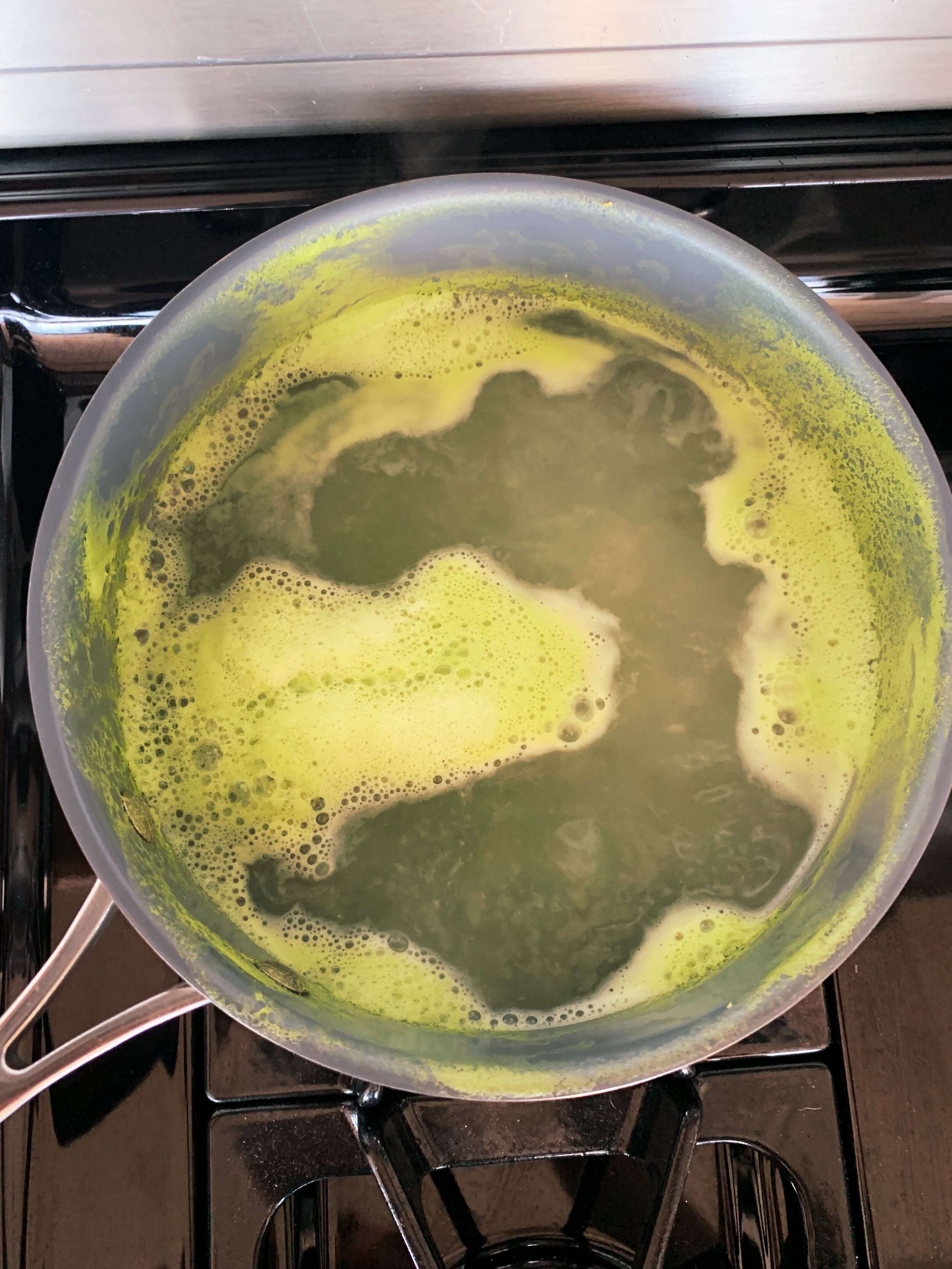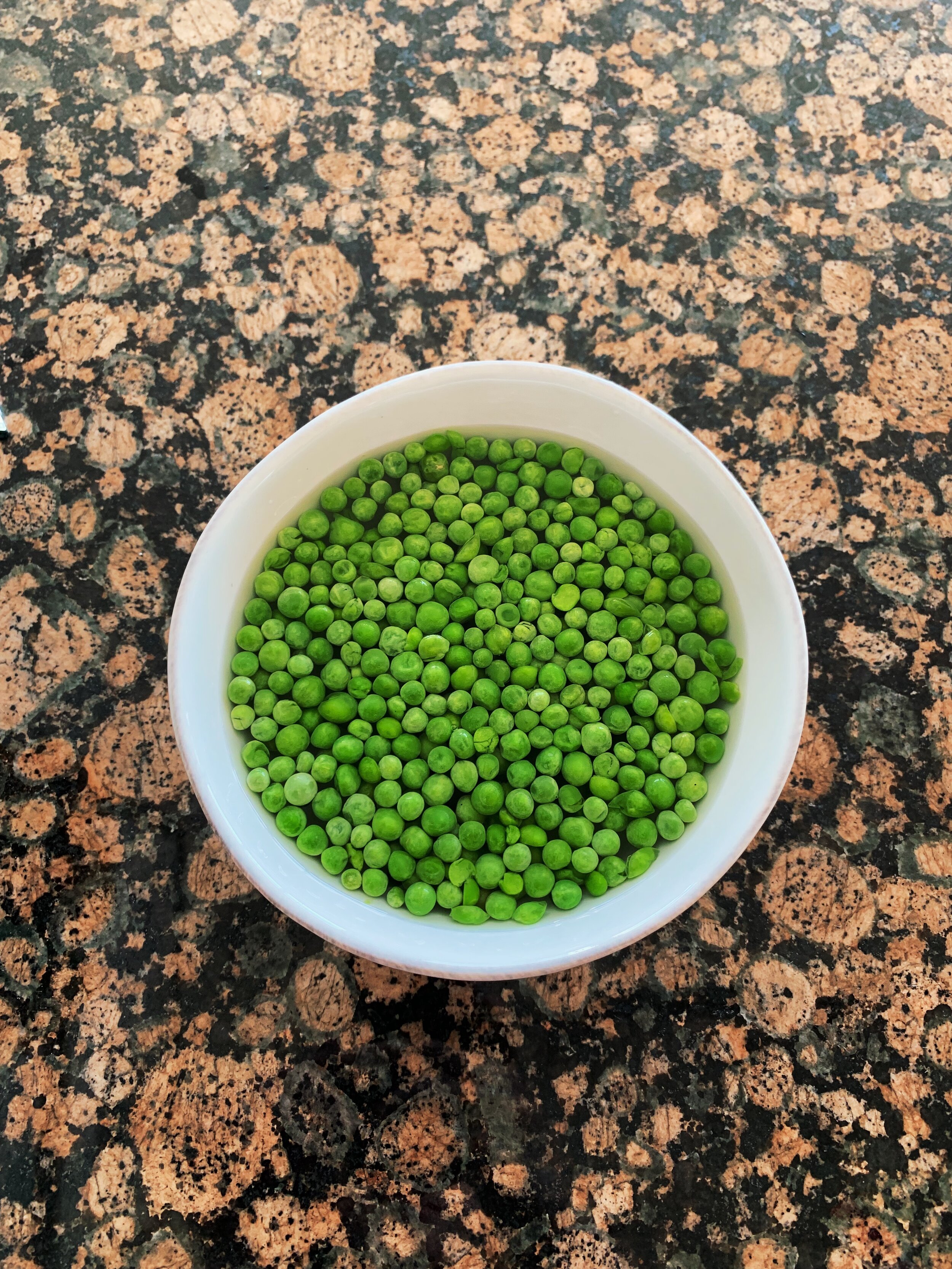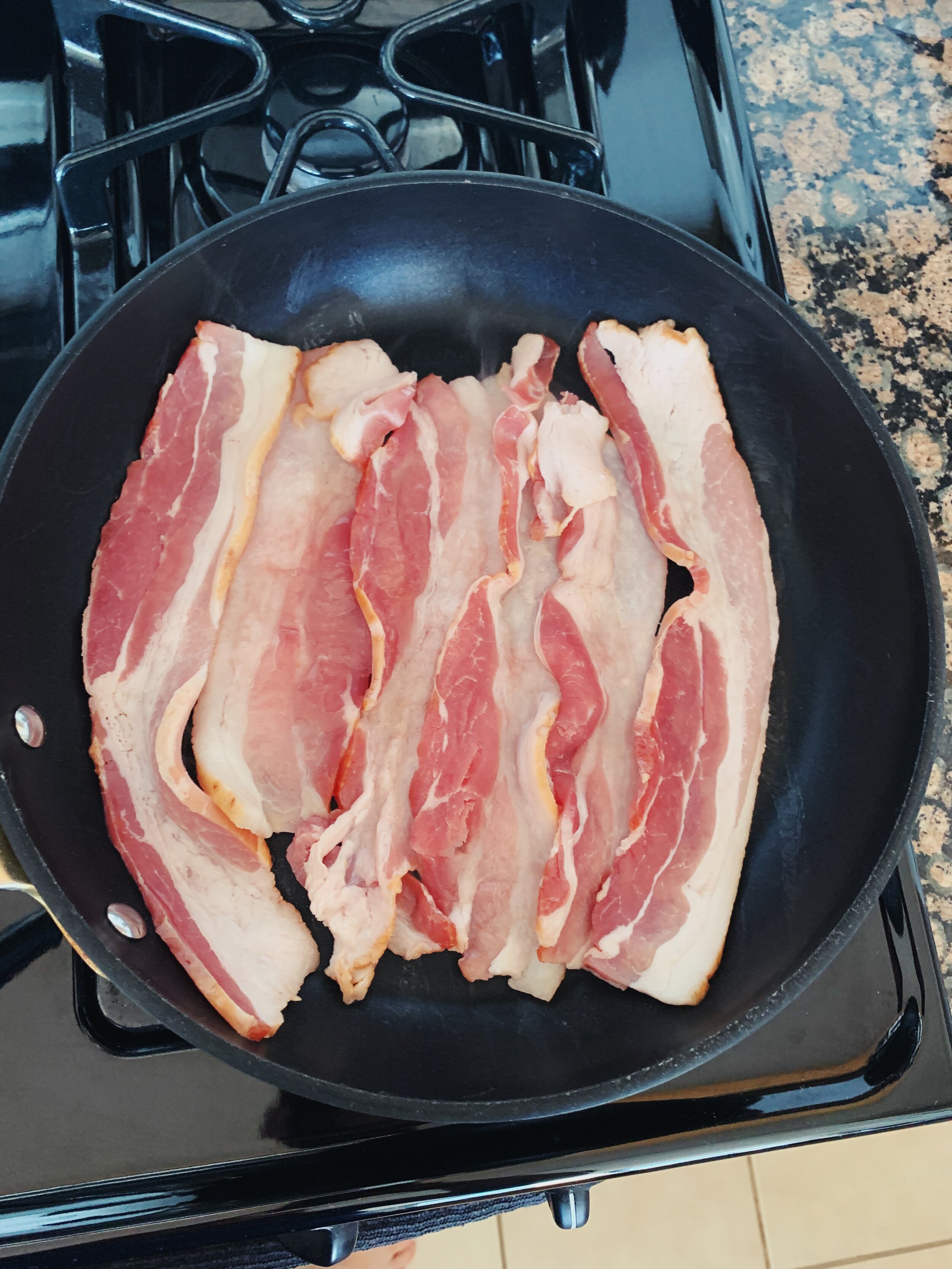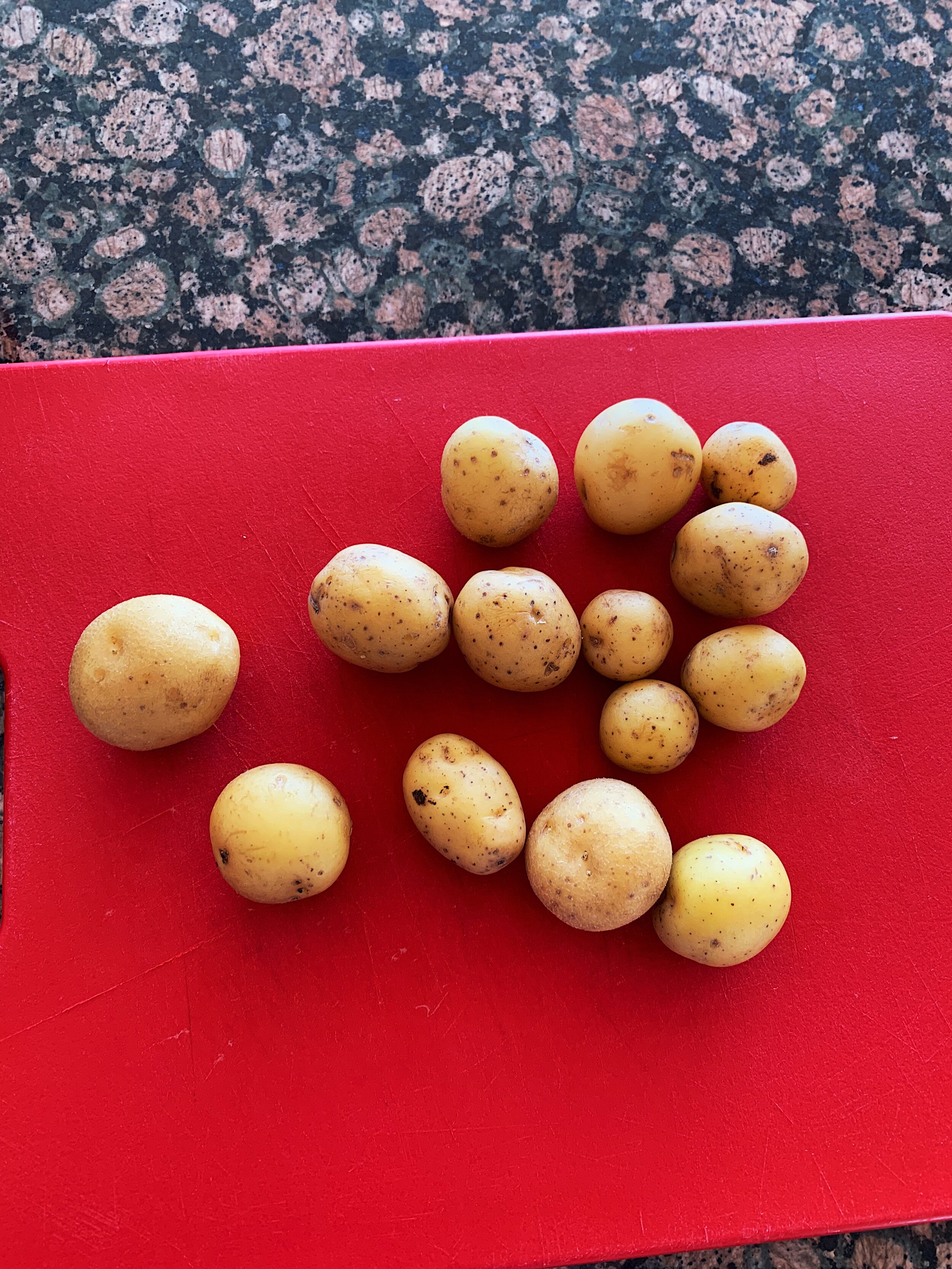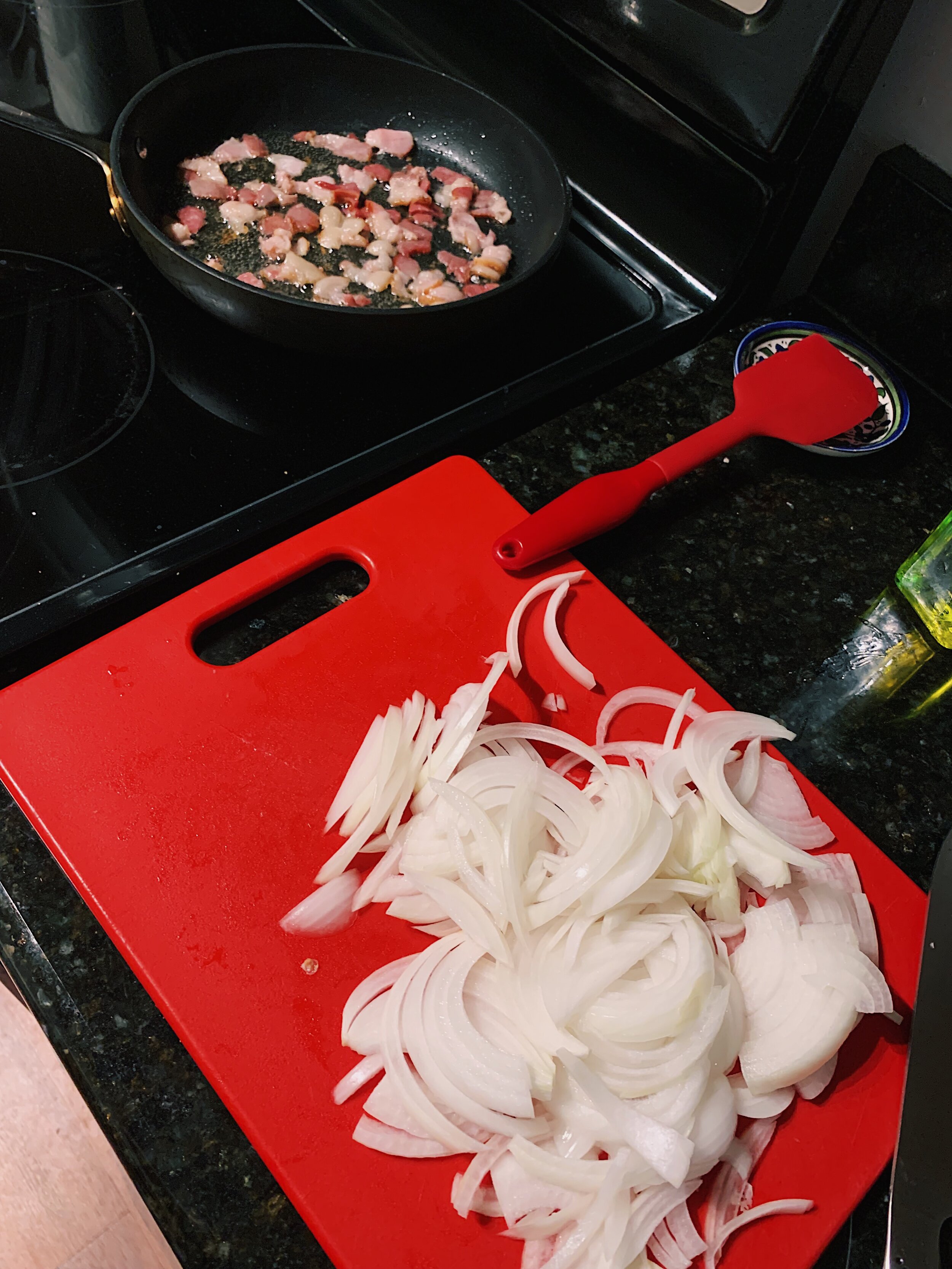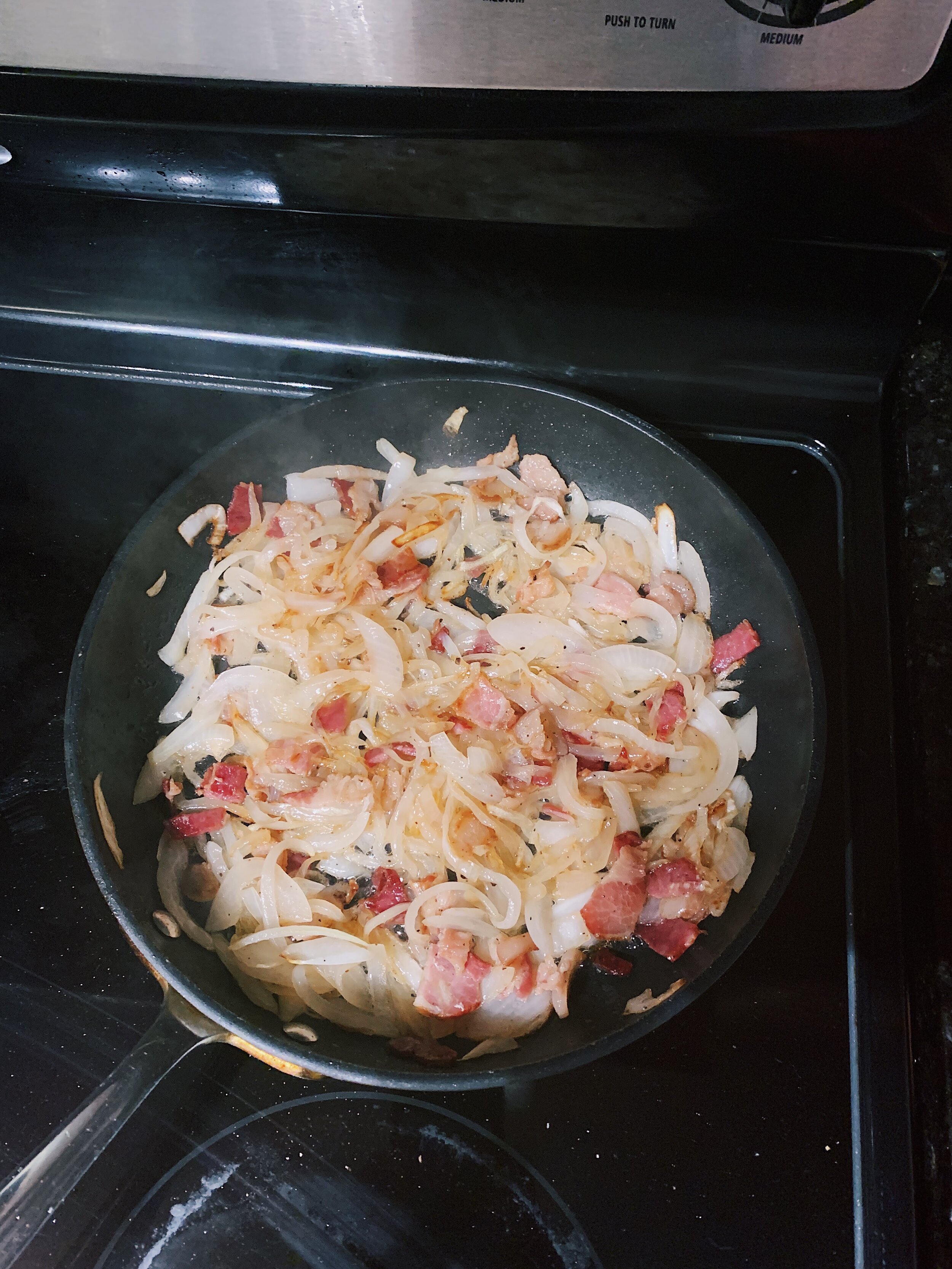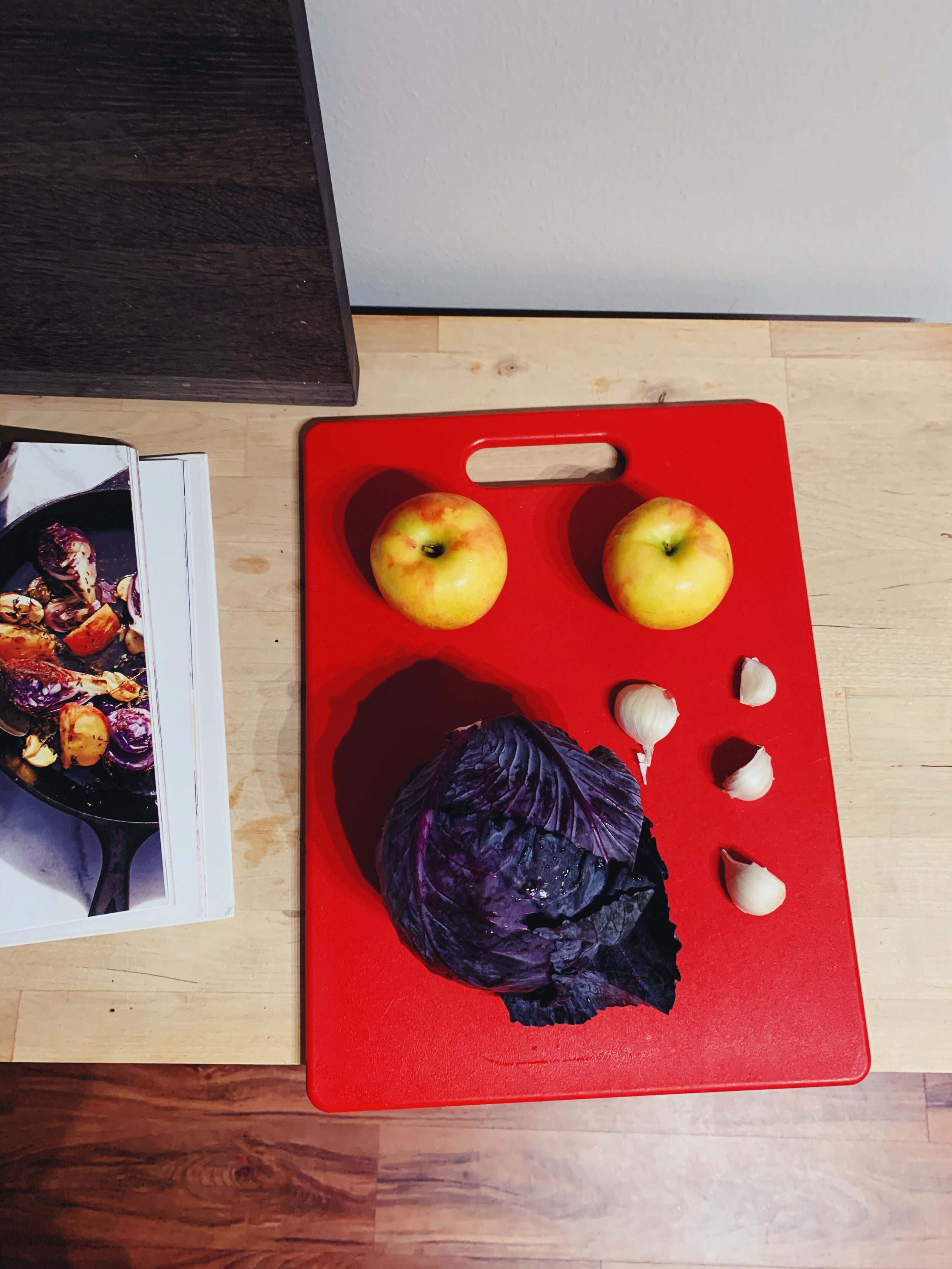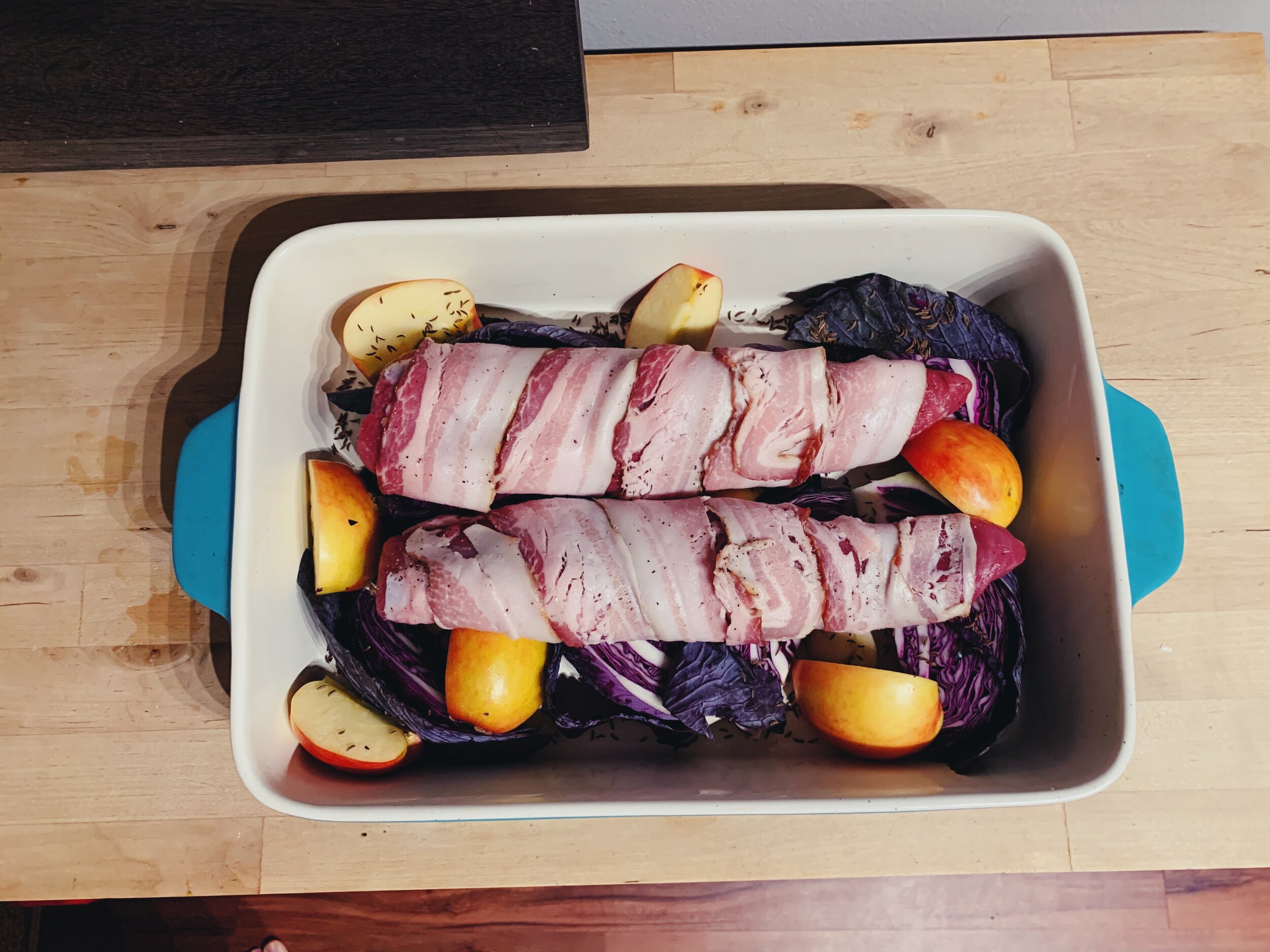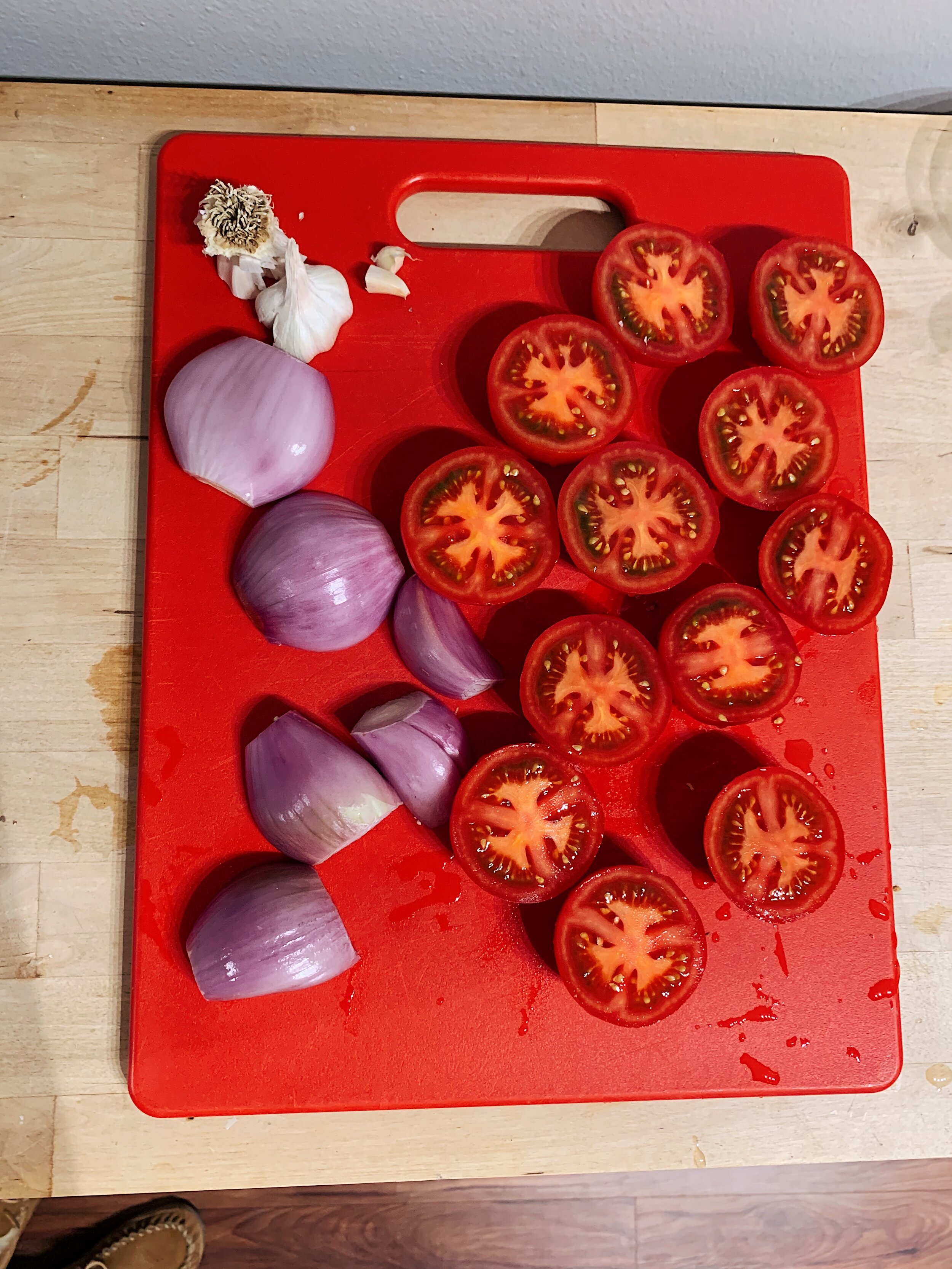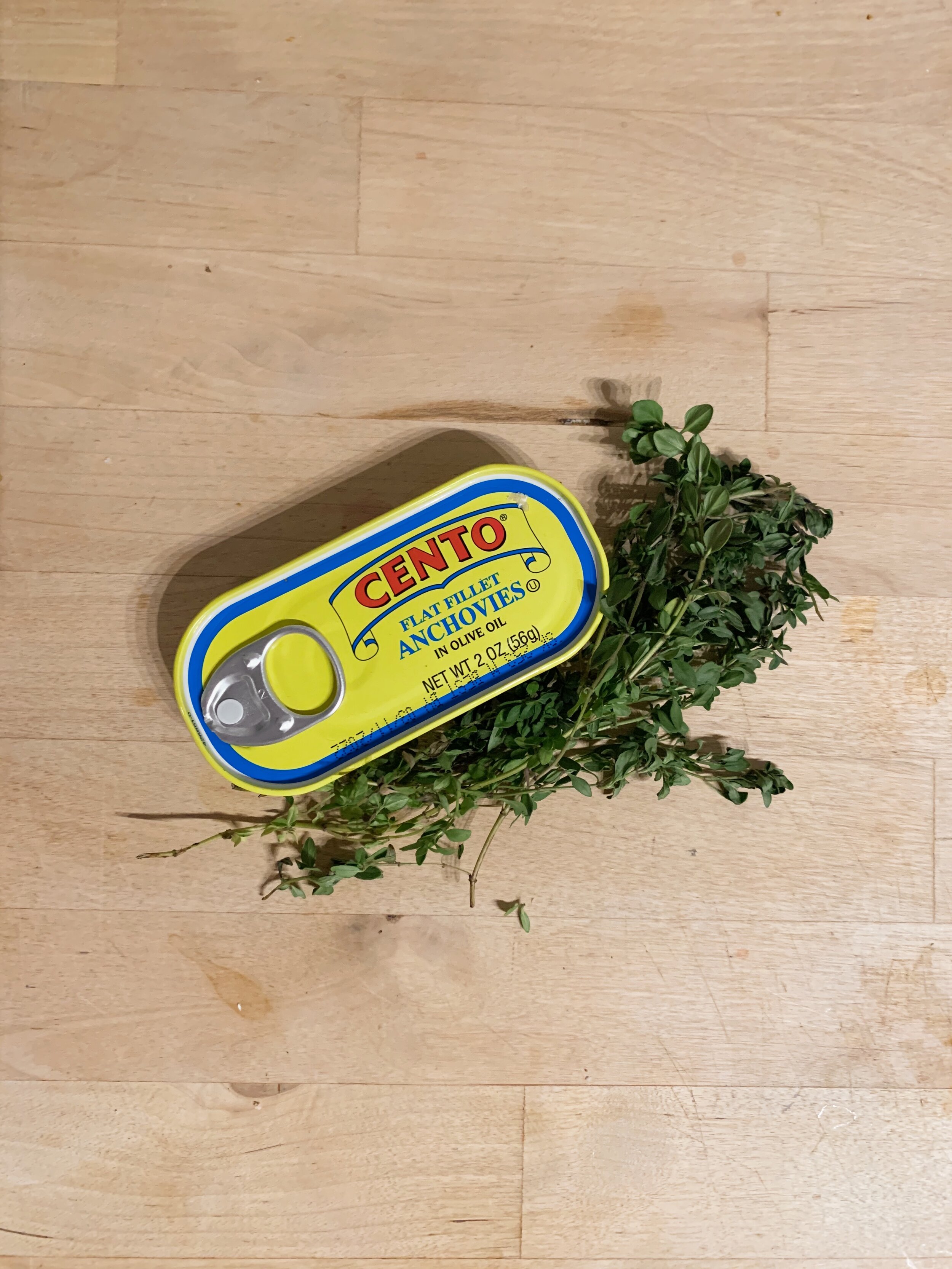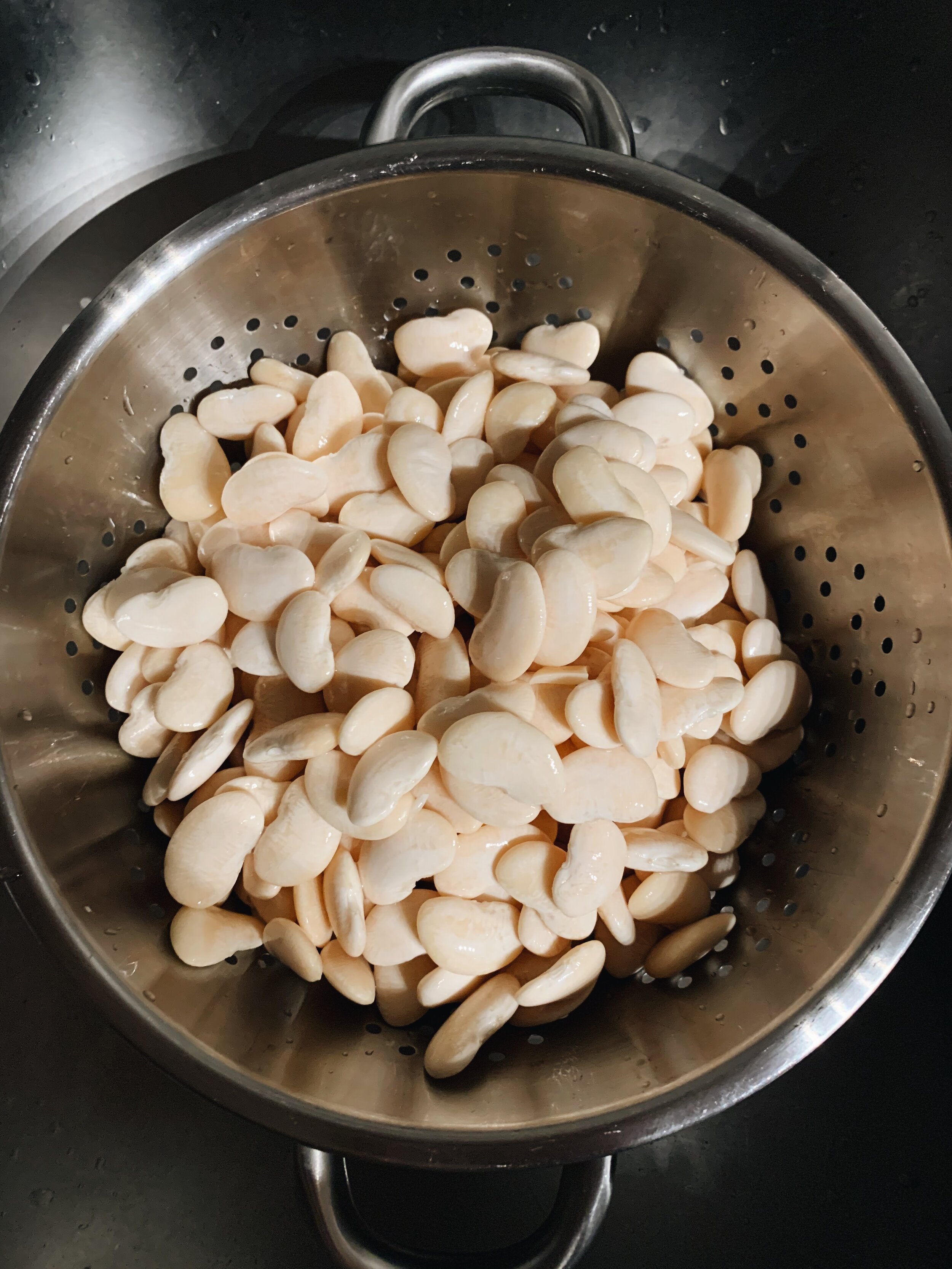For a long time, actually my whole life, I thought split peas were simply green peas split down the middle. Sometimes things are allowed to be that simple, right? Turns out, I was sort of right. Split peas are green peas that have been peeled, dried, and then split down the middle. Split peas are grown and harvested differently than regular green peas, in a manner conducive to their drying and splitting. Personally, seems like a lot of effort to go into for some subpar grains (they don’t begin to compare to lentils or beans). And, other than split pea soup, does anyone use these split little guys in their regular cooking? I have doubts!
Alas, Alison has found a way to incorporate these oft forgone grains in a delicious salad that’s perfect for packing in school lunches and bringing to barbeques. Honestly, I’m here for it.
I started by preparing the split peas. They needed roughly 30 minutes in boiling water to soften. I expected their bite to have a tiny mealy center, much like a lentil, but I don’t think that can be achieved without over-cooking them and letting them fall apart into a great green mush. If you want them to maintain their shape, expect their bite to resemble a slightly undercooked lentil. I combined the drained split peas with regular peas (I used frozen and thawed ones). Instead of letting my peas thaw over time on the counter, I stuck them in cold water, and they thawed within a matter of minutes.
Next, I cooked some bacon low and slow. Ten minutes over medium heat was enough time for the bacon to render lots of fat and still get crispy, just the way Jordan likes it. The bacon fat became my cooking fat for the potatoes, which were baby dutch potatoes, quartered, and sprinkled with salt and pepper. Fifteen or so minutes over medium heat was all it took for the potatoes to turn a golden, crispy brown. The trick is to avoid stirring them too much.
Before tossing the potatoes with the peas and bacon, I poured mustard and red wine vinegar in with the potatoes and coated them in the acidic liquids. The whole skillet -- potatoes, cooking fat and all, get tossed with the peas and bacon and create a wonderfully flavorful salad. Topped with fresh chives, this salad is better than any salad you’ll find at a deli counter. It can be served cold or hot, either is delicious.
I’ve been eating this for lunch all week, and I’ve yet to grow tired of it.
138 recipes cooked, 87 to go.


